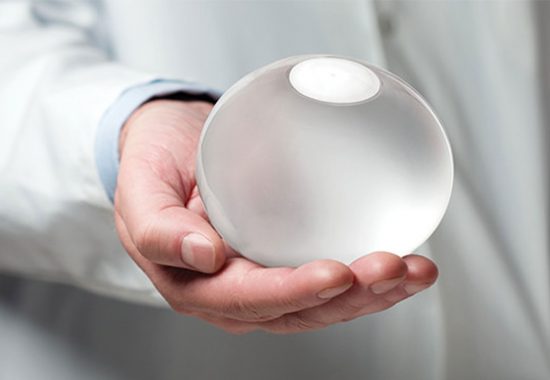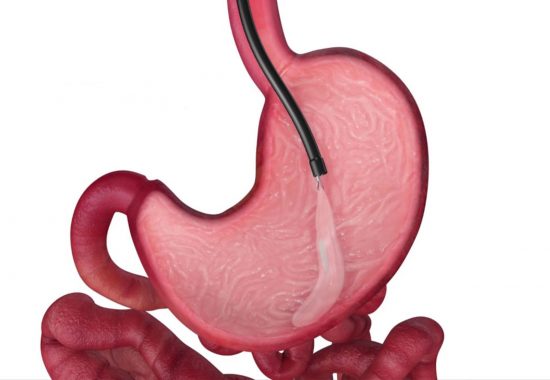Gastric Baloon

What is Gastric Balloon?
A gastric balloon, also known as an intragastric balloon or belly balloon, is a soft balloon that is inserted into your stomach through your mouth using an endoscope, non-surgically.
The balloon is then filled with saline solution, which partially fills your stomach, leaving less room for larger amounts of food and/or drink intake.
Who is the gastric balloon suitable for?
- It can be used on anyone who can tolerate endoscopy.
- It can be used in patients who do not want an operation, in patients without a gastric hernia or ulcer, in people without previous gastric surgery, in psychiatric illnesses.

Indications
- Patients with a BMI (BMI) of 40 or more and a BMI (BMI) of 35 wıth an additional disease should be informed to loose weight before the procedure.
- BMI (BMI) over 30 kg / m2 is used in patients who cannot lose weight despite diet and exercise programs.
- The method is not surgical.
- The procedure is performed under sedation in 15-20 minutes.
- Patients are discharged on the same day and provided with food in the early phase after the procedure.
- Thanks to the newly developed balloons, it is possible to stay in the patient’s gastric balloon for 1 year.
- With proper diet and exercise programs, it is possible to lose 30-50 kg weight in 1 year.
- After the old balloon has been removed, the new balloon can be returned to the stomach at the patient’s request.
- It is more economical than operations in bariatric surgery.

Gastric Balloon Procedure
- Your throat will be numbed with a special spray. If you wish, you can also ask for an injection to make you feel sleepy, but these options will be discussed with you beforehand.
- After you are comfortable, the doctor will insert a plastic mouth guard between your teeth to keep your mouth open for the scope.
- The scope will be passed through your mouth and into your stomach. This will not be painful, and you will be able to breath without worry. The doctor may also need to pass some air down the scope to have a clear view.
- The scope will be removed.
- The deflated balloon will be passed into your stomach and inflated with either air or saline solution.
- The scope will be passed into your stomach one final time to double check that the balloon is in the right position and properly inflated.

After The Procedure
After the procedure, gastric balloon patients usually:
- Leave the hospital and return home the same day.
- Have someone who is willing and able to drive them home and take care of them for at least 24 hours. The patient’s throat will probably be sore following the procedure since the balloon was inserted through the mouth.
- Have fully recovered and are back to work within 3 days.

Weight Loss
The average gastric balloon patient loses a moderate amount of weight very quickly after the procedure:
- Month 3: Approximately 15% of excess weight
- Month 6: Approximately 30% of excess weight
- Actual weight loss could be higher or lower.
The most popular types of balloon must be removed after 6 months, so long-term weight loss depends entirely on the patient’s diet and lifestyle choices. In other words, gastric balloon should not be viewed as a “long-term fix.”
Balloon Removal
The gastric balloon is not designed as a long-term fix. Because of the risk of it interfering with your stomach, the balloon is usually removed after 6 months. However, it could be left in place anywhere from 12 weeks to 1 year, depending on your results and the type of balloon you receive.

A managed diet and exercise program: After removal, it is recommended you stick with a managed weight loss program, and then maintain your newly established diet going forward.
An additional bariatric procedure, like the gastric sleeve or Lap-Band, which is performed after the balloon is removed. Any weight loss that results from the balloon will reduce the risk of complications and increase the likelihood of long-term success of a more involved bariatric procedure.
It is also possible to have another balloon inserted after removal.
A qualified surgeon will help you make the best choice.
Gastric Balloon Removal Procedure
The gastric balloon removal procedure takes about 20 to 30 minutes and is very similar to the insertion procedure for the Orbera, ReShape, and Spatz systems (Obalon uses swallowed pills for balloon insertion):
- No food 24 to 48 hours before surgery (depends on surgeon)
- No food or drink 12 hours before surgery
- Scope and instrument passed through mouth to deflate balloon(s)
- Balloon is removed through the mouth
- Return home the same day
Gastric Balloon Side Effects
The intragastric balloon is relatively low-risk and issue-free. However, as with any medical procedure, there are potential risks and side effects.
- Cramps, Nausea, & Vomiting – Because your stomach will be readjusting to the presence of the balloon, in the first couple weeks after the procedure you will probably experience some combination of cramps, nausea, and possibly vomiting.
- After the first couple of weeks, if food sticks to your balloon, you may experience vomiting. To reduce this risk, you should avoid foods that are likely to stick to your balloon, like pasta, and sip water after you eat to rinse your balloon.
- Bloating – Some people also report feeling bloated. Most likely this is from the feeling of the balloon in the stomach, however.
- They found that in rare cases, life-threatening complications may occur, including balloon deflation, gastrointestinal obstruction, ulceration, and gastric and esophageal perforation. Other rare conditions that can be addressed if caught early include acute pancreatitis and spontaneous hyperinflation.
